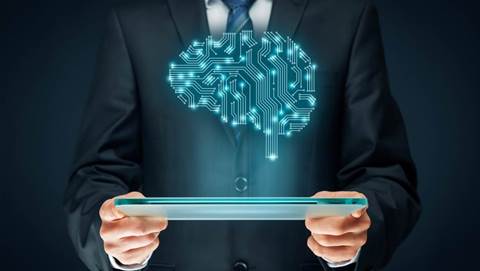The link between employee engagement (EE) and customer experience (CX) is often a close and symbiotic one as an engaged workforce usually leads to a better customer experience.
With the pandemic, growth of the digital economy, data volumes increasing and more millennials and Gen Zs joining the workforce, how are the dynamics between EE and CX in the APAC region changing? Will factors such as age, cultures and diversity pose challenges to improving experience management here?
iTNews Asia speaks with Denise Miura, Vice President, Asia Pacific and Japan, Medallia, to hear her insights and perspective.
iTNews Asia: In this era of digital transformation , how closely intertwined today is employee engagement and the customer experience for businesses? How has the landscape for customer and employee experience management evolved in the region over the last five years?
Think of employee engagement and customer experience as twins. One cannot live without the other. According to research, brands that lead in customer experience and the market have 1.5 times more engaged employees than the ones with less satisfactory customer experiences.
Digital is now at the heart of almost every company, and there is no going back to the way things were. Consumers today are in the driver’s seat. To stay ahead, organisations must continually learn and be ready for what’s next, by engaging and listening to customers and employees.
In Asia, by 2025, 50 percent of the population will comprise millennials and Gen Zs. In other words, more than half of the customer universe have spent a significant portion of their lives with internet and smartphones.
We are seeing a lot of opportunities and have been investing across APAC, expanding beyond our established presence in the US and Europe – from a single market in Australia into New Zealand, ASEAN, Korea and Japan. Key industries like telecommunications, financial services and retail are seeing the fastest growth in experience management.
iTNews Asia: Which Asia market or countries is witnessing the greatest transformation for CX and EX? Why?
I would not say that any particular market within this region is witnessing more or less transformation for CX and EX. It is more about where they are on the journey.
In New Zealand where the CX market is more mature, the momentum is around automation – replacing traditional contact centres with digital touchpoints and messaging. On the other end of the spectrum, in a country like Japan, where prior to the pandemic, most consumer interactions were in-person, there is now a huge spike in online purchases.
Regardless of which market we are in, the pandemic has accelerated the pace of digital transformation. It has forced companies out of their comfort zone; every company today is becoming a technology company, and every company today is a digital company.
There is more experience data than ever before, but there is still a disconnect between how organisations capture the data and the speed that they act on that feedback. Very often, companies do not have a complete view of the data and signals that they have received. As a result, they focus on the wrong things or act too late. More can be done to help companies make sense of and leverage the valuable reservoirs of data to further their business objectives.
iTNews Asia: What are some likely issues that companies will face as the world transitions to a digital economy that is driven predominantly by millennials and Gen Zs? Are there particular industries that will face more challenges than others? Do you see cultural factors as a barrier towards CX/EX in markets/industries where the transformation is slower?
Millennials and Gen Zs are driving today’s digital economy. Most transactions are expected to be done online. For example, the insurance sector is seeing a dramatic shift from in-person claims management to online. CIOs are facing a huge challenge in tackling this operational mammoth, eliminating friction and delivering a seamless digital customer experience.
In general, prior to the pandemic, cultural barriers and preferences in Asia, particularly in Japan, certainly impeded the growth of digital interactions. But the pandemic broke down those barriers out of necessity, and there are no signs that things will return to pre-pandemic norms.
I once had a prospect walk past a meeting room that I was sitting in, not once but three times, because he was expecting “Miura-san” to be a man. Over time, I have found that I need to smile more, suppress frustration, maintain an even temperament at all times. Regardless of gender, these attributes are what make a better leader; they are good skills to hone and muscles to build.
-Denise Miura, Vice President, Asia Pacific and Japan, Medallia
iTNews Asia: Has the pandemic made it easier or more difficult for companies to engage employees and customers? What lessons can we learn from the past 2 years? How is Medallia helping companies further their CX/EX efforts?
From the CX perspective, the shift in consumer habits to the digital realm has generated an explosion of new data. It has created the opportunity for improved engagement, and companies who are determined to delight customers will benefit from the data collected.
From the EX perspective, the shift to remote working certainly created new challenges in staying engaged with employees, who, prior to the pandemic, were more of a captive audience. But it has also created an opportunity to dial up the people side of the equation, turn the customer playbook inward and build a more engaged workforce. This means taking a fresh look at the entire people puzzle: employee wellbeing, work-life balance, inclusive leadership and culture, compensation, people development, empowerment, among others.
If there is a silver lining as part of the pandemic, IT has played an incredible role transitioning to be at the front line for employees. For some forward-looking companies, the transition has been very positive. As a result, CIOs and the IT departments have developed some goodwill, and the relationship between the CIO and the CEO has drawn closer, along with the rest of the C-suite.
By opening a direct listening feedback channel for all customers, employees and other business stakeholders, organisations are empowered to be ahead of these challenges and be in a position to more adequately meet the different needs. We are always excited to see the impact that we have delivered for our customers.
iTNews Asia: Tell us about your leadership style. Women are still underrepresented in tech leadership, particularly in Japan where you are based. What are the challenges that you face? How do you manage to navigate and rise up in this sector?
I once had a prospect walk past a meeting room that I was sitting in, not once but three times, because he was expecting “Miura-san” to be a man. Over time, I have found that I need to smile more, suppress frustration, maintain an even temperament at all times. Regardless of gender, these attributes are what make a better leader; they are good skills to hone and muscles to build.
I am not afraid of getting my hands dirty. What excites me is to be at the forefront of disruptive technologies. To me, it is important to take pride in the work, over-deliver, act with integrity and treat others well, just like how I would like to be treated.
My other advice would be to seek out employers who value diversity. It is wonderful to see many women leaders within Medallia. Using its own EX technology has resulted in organisational and employee values clearly being surfaced and reflected in policies.
Overall, the real impact of experience management will ultimately be more empathetic companies, industries and government agencies; I am happy to play a role in an organisation that is driving the region’s EX transformation.
What are your predictions for CX and EX in the region for the next two years?
With AI, IoT, 5G, and 6G, quantum computing, and other rapidly changing technologies, we will probably start to see the rise of tech-driven individualised experiences at scale.
Organisations will interact, engage when and how we want, with exactly what we each are looking for, and in a way that is practically and emotionally spot on for each of us. And, this will be done ‘individually at scale’, which sounds like a misnomer. It means experiences would not be personalised or tweaked from a baseline anymore, they will be made on the spot for the individual based on experiential components, assembled in real time.
On EX, the rise in investment on diversity, equity and inclusion in 2020 and 2021 will continue. This presents a great opportunity for smart companies to become the heartbeat of massive and complex cultural change programs next year and beyond.








